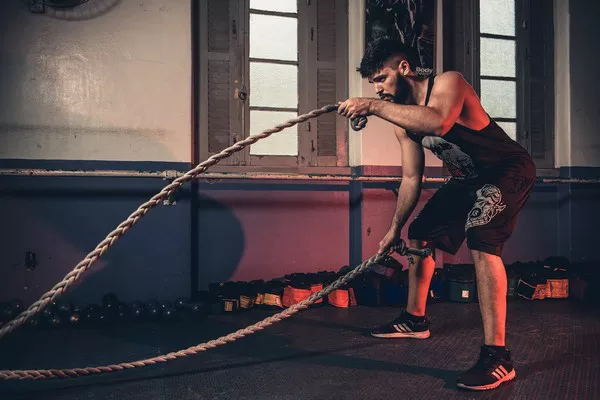Cardiovascular exercise, commonly known as cardio, is essential for maintaining overall health and well-being. It strengthens the heart, improves circulation, boosts metabolism, and enhances mood. While traditional cardio exercises often involve the use of legs, there are plenty of effective alternatives for individuals with leg injuries or disabilities, or those simply looking to diversify their workouts. In this article, we explore various methods to achieve a cardio workout without relying on your legs.
Understanding Cardiovascular Exercise
Before delving into alternative methods, it’s crucial to understand the principles of cardiovascular exercise. Cardio workouts aim to elevate your heart rate and sustain it within a target range for an extended period. This sustained increase in heart rate strengthens the heart muscle, enhances lung capacity, and improves overall endurance.
Benefits of Cardiovascular Exercise
Cardiovascular exercise offers a plethora of benefits, including:
Improved Heart Health: Regular cardio workouts reduce the risk of heart disease by strengthening the heart muscle and lowering blood pressure and cholesterol levels.
Weight Management: Engaging in cardio activities helps burn calories, aiding in weight loss or weight maintenance when combined with a balanced diet.
Enhanced Endurance: Cardiovascular exercise increases stamina and endurance, allowing you to perform daily activities with ease and participate in various physical activities.
Mood Enhancement: Cardio workouts stimulate the release of endorphins, neurotransmitters that promote feelings of happiness and reduce stress and anxiety.
Better Sleep: Regular exercise, including cardio, can improve sleep quality by promoting relaxation and reducing insomnia.
Now that we understand the importance of cardiovascular exercise let’s explore how to achieve it without using your legs.
1. Swimming
Swimming is an excellent full-body workout that is gentle on the joints and does not require the use of legs. Whether you’re doing laps in a pool or swimming in open water, the resistance provided by the water engages multiple muscle groups, including the arms, core, back, and chest.
To maximize the cardiovascular benefits of swimming:
Focus on maintaining a steady pace throughout your swim session.
Incorporate different strokes such as freestyle, backstroke, breaststroke, and butterfly to target various muscle groups.
Challenge yourself by increasing the distance or intensity of your swim over time.
2. Upper Body Ergometer (UBE)
An upper body ergometer, also known as a hand bike or arm bike, is specifically designed to provide a cardiovascular workout for the upper body. It consists of pedals and handlebars that you can grip and pedal with your hands, simulating the motion of cycling without involving the legs.
When using an upper body ergometer:
Adjust the resistance to match your fitness level and desired intensity.
Maintain proper posture and engage your core muscles throughout the exercise.
Aim for a consistent pedaling rhythm to keep your heart rate elevated.
3. Rowing
Rowing is a low-impact, high-intensity cardio exercise that primarily targets the upper body, back, and core muscles. Using a rowing machine, you can simulate the motion of rowing a boat, pulling the handlebar towards your chest while extending your arms and legs.
To get the most out of rowing:
Start with a proper warm-up to prepare your muscles for the workout.
Focus on driving with your arms and engaging your back muscles during the pulling motion.
Maintain a controlled pace and avoid using momentum to ensure a challenging workout.
4. Boxing or Shadow Boxing
Boxing is a dynamic cardio workout that engages the entire body, including the arms, shoulders, core, and legs. While traditional boxing involves footwork and lower body movement, shadow boxing allows you to focus solely on punching combinations and defensive maneuvers, making it accessible for individuals with leg limitations.
To incorporate boxing into your cardio routine:
Begin with a dynamic warm-up to increase blood flow and loosen up your muscles.
Practice various punching combinations, such as jabs, crosses, hooks, and uppercuts, while maintaining proper form and technique.
Integrate footwork drills and defensive movements to add complexity and challenge to your workout.
5. Hand Cycling
Hand cycling, also known as handcycling, involves using a hand-powered bike or tricycle to propel yourself forward using only your arms. This activity provides an excellent cardiovascular workout while offering the freedom to explore outdoor trails or participate in organized races and events.
When hand cycling:
Adjust the resistance or gear settings to control the intensity of your workout.
Pay attention to your cadence and aim for a consistent pedaling rhythm.
Incorporate hills or inclines to increase the challenge and engage more muscle groups.
6. Battle Ropes
Battle ropes are thick, heavy ropes that you can anchor to a stable object and use to perform various dynamic exercises, such as waves, slams, and circles. These movements require upper body strength and coordination while elevating your heart rate for an effective cardio workout.
To use battle ropes effectively:
Stand with your feet shoulder-width apart and hold one end of the ropes in each hand.
Perform rapid, alternating waves or simultaneous waves to create a continuous motion.
Maintain tension in your core muscles and keep your movements fluid and controlled throughout the exercise.
7. Hand Paddling
Hand paddling involves using your hands to propel yourself on a paddleboard or kayak, providing a challenging upper body workout while enjoying the tranquility of being on the water. Whether you’re paddling on calm lakes or navigating gentle rivers, this activity offers a unique way to improve cardiovascular fitness without using your legs.
To optimize hand paddling:
Focus on engaging your core muscles to stabilize your body and maintain balance on the watercraft.
Use proper paddling technique, including a full range of motion with each stroke and rotating your torso to generate power.
Experiment with different water conditions and paddle routes to keep your workouts varied and engaging.
Conclusion
Achieving a cardiovascular workout without using your legs is not only possible but also offers a diverse range of options to suit individual preferences and fitness levels. Whether you prefer swimming, rowing, boxing, or other upper body-focused activities, incorporating these exercises into your routine can help you maintain optimal heart health, improve endurance, and enhance overall well-being. Remember to start gradually, listen to your body, and consult with a healthcare professional before beginning any new exercise program, especially if you have pre-existing medical conditions or injuries. With dedication and consistency, you can unlock the benefits of cardio exercise and take significant strides towards a healthier, more active lifestyle.
[inline_related_posts title=”You Might Be Interested In” title_align=”left” style=”list” number=”6″ align=”none” ids=”8925,8922,8841″ by=”categories” orderby=”rand” order=”DESC” hide_thumb=”no” thumb_right=”no” views=”no” date=”yes” grid_columns=”2″ post_type=”” tax=””]
































